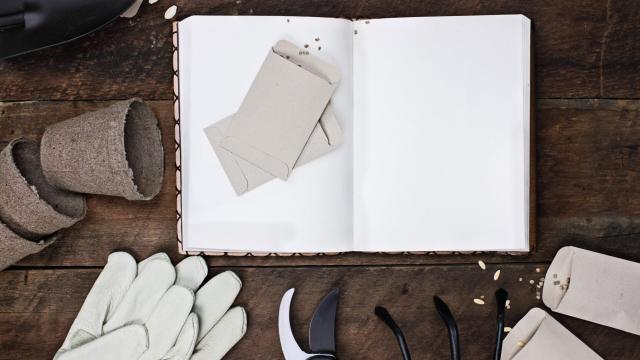When you think of gardening tools, items like gloves, spades, and pruning sheers probably come to mind. But it turns out, there’s something else that can be extremely valuable for your garden: a journal. In an article for Food52, Master Gardener Nadia Hassani explains why. Here’s what to know.
How to pick a gardening journal
There’s no “perfect” gardening journal. In fact, it can take several different forms, according to Hassani:
How you keep track of what you grow — with a garden app, notebook, monthly planner, index cards, or on spreadsheets — doesn’t matter, as long as it works for you and you record things while they’re still fresh in your memory. As with anything else, record-keeping takes the guesswork out of gardening so you can focus your efforts on making your plants thrive.
Basic information to record
Whether you’re an experienced gardener, or relatively new to the activity, there are two things Hassani says are essential in a gardening journal:
Maps
Specifically, you’re going to want to draw a map of your garden — to scale — and record what you plant where. Here’s Hassani to explain why:
Figure out how much space each crop will need, mark it on your map, and plant accordingly. You will need the map for your garden next year to practice crop-rotation, a very old farming practice that avoids planting crops of the same families in the same spot for at least two years in a row. For example, peppers, eggplants, potatoes, and tomatoes are all members of the nightshade family, so you should not plant tomatoes in the same spot where you planted peppers the year before.
Planting and fertilizing dates
This one’s a little easier than making a map. Basically, you want to write down what you planted and when. This is especially the case if you’re starting from seed, Hassani writes, “so you’ll know the time frame in which you can expect to see growth, or whether the seeds have failed to germinate and you should reseed.”
Also keep track of the dates when you fertilize your garden, as well the type of fertiliser you use. Do the same thing for any pest- or disease-control products. “By and large, too little is better than too much, because overdoing fertiliser or chemicals can harm your plants,” Hassani says.
Additional useful information
On top of drawing the map and recording the important dates, there are a few other things Hassani says that more advanced gardeners might want to include in their journal. These include:
-
Harvest dates (to give you an idea of what to expect next year)
-
Which pests are a problem, and when
-
Your favourite plants and where you purchased the seeds/seedlings

Leave a Reply
You must be logged in to post a comment.